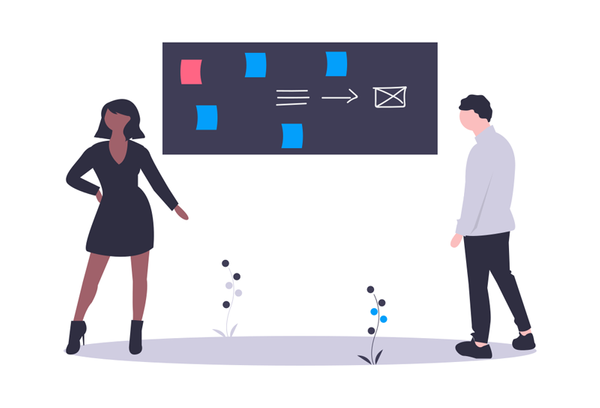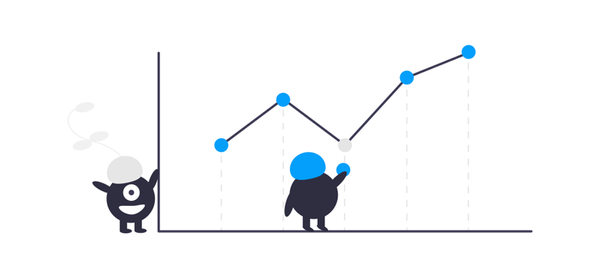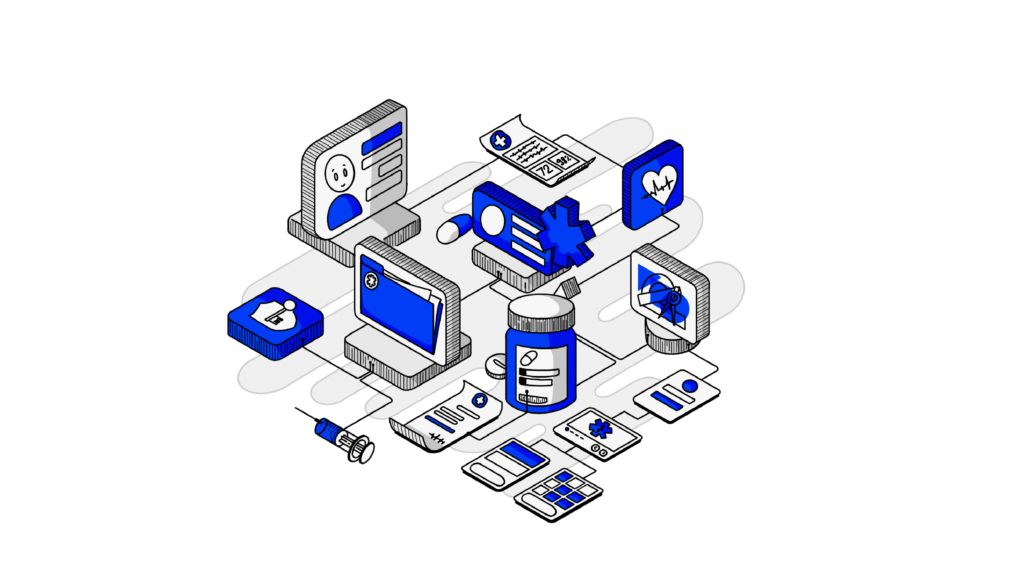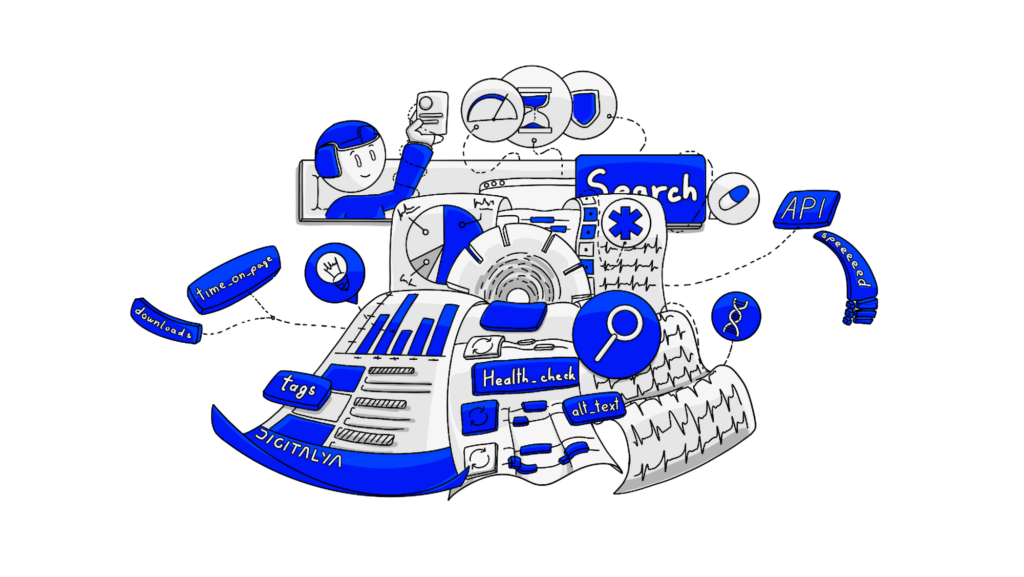What would the world be like without innovation?
Yet, it’s not enough to be ingenious and creative to reach the target market with your product. You need to know your customers, the market, and your competitors in order to stand out from the crowd. Luckily, there is a systematic way of approaching this—the new product development process in 7 steps.
1. What is the product development process?
Product development is the first stage of a product’s life cycle. It’s a set of activities that help take your product idea from being a simple concept to market availability.
Npd processes follow a strategy divided into multiple steps or phases that help a company conceive a new product idea. This is followed by researching, planning, designing, prototyping, and testing, followed by finally launching the idea into production.
2. Why is the product development process important?
Having a successful new product requires a lot of resources and is quite risky as a whole. Because of this, you need to be aware of why the seven steps of new product development process are so necessary.
In their article “Why Most Product Launches Fail,” the Harvard Business Review discusses the probability of a new product succeeding after it’s launched. What they found is interesting:
Most products never succeed. According to the research, around %75 of consumer goods and retail products earn less than $7.5 million during their first year of existence. Less than 3% can reach more than $50 million and be labeled as a highly successful launch.
They identified several possible reasons:
- The product falls short of expectations or previously made claims
- The product doesn’t meet a clear and unmet customer need
- The product requires a lot of customer education but doesn’t get it
- There is no market for the product
- The company can’t support fast growth.
These are just a few reasons why your product idea might not work as well as you think it will. Others include sudden market changes, poor design or pricing, changes in customer preferences, and so forth.
However, this is where the new product development in 7 steps kicks in. Among the benefits of going to this process, here are some worth remembering:
- Have control over your product
Having no strategy is a wrong move. You need to plan the development processes of your product to have control over it and reach your business goals.
- Improve your product’s performance
Even if you spend a lot of money on the production of your product, you could still end up with poor quality. Unfortunately, that can happen, especially if you don’t keep track of any mistakes you make to improve your process.
What to consider before starting the product development process?
- Is there a demand for your product?
Is there a problem that people have, and your product solves it? Is it effective? If you answered with ‘yes’ to those questions, then your idea stands a chance.
If your product is idea-driven, your target market will need to be evangelized before you can start making some profit.
- Is your product doable?
In theory, we can come up with a lot of crazy ideas. The real tricky thing is to find something innovative that can be produced.
Another thing you have to keep in mind is the cost to develop your product. Analyze your budget and see if you can afford to materialize your idea as is or if it needs to be simplified.
- What’s the competition?
In case you plan on entering an already existing market, you need to know if you have to come up with a stronger value proposition than your competitors or if you have to prepare for more intensive customer acquisition efforts.
3. What are the 7 stages in the new product development process?
If you’re in the process of doing some research on the new product development process, you probably found that there are usually between 4 and 8 steps involved. However, the majority of tech businesses use the 7 steps npd process to develop their product ideas.
1. Concept and ideation
This is the stage where the technical requirements and functionalities of the product are defined. You take elements from different discussions and brainstorming sessions and slowly put them together into a product concept.
Now you float ideas on innovative features and try to find the best solution to the problem you’ve identified.
Tips and tricks:
- Brainstorm, brainstorm, brainstorm
This is an excellent source of ideas. Gather your team, take an hour or two, and get all of your crazy ideas down on paper. You might be surprised by the outcome.
- Pitch your idea
Present your idea to people and see how they react. This is a great way to see if they resonate with the solution you propose or not.
2. Idea Screening
When your idea is essential to you, it’s hard to stay impartial. So here’s where the screening process comes into play. Now it’s the time when you sit down with your team and try to find any flaws, analyze the numbers and the return of investment, and determine if you can afford to develop the product or not.
This is an excellent point to start thinking about market research. First, try to build up a quantitative view of the market for your product.
Tips and tricks:
- Online research
You can find many statistics that can help you grasp an idea about your target market, the marketing potential of your product, and so on.
- Be open to change
When working on your hypothesis, try to change up the data to cover most scenarios. This way, you’ll be prepared for anything.
3. Concept development and testing
This is one of the stages in new product development that takes your ideas and turns them into product concepts. What’s the difference? A product idea is something that a company can see itself marketing to its clients. A product concept is more detailed and more focused on customer terms.
Introduce your idea to some clients—explain what you want to do and see their reaction. Do they understand it? Do they seem interested? This is your moment to test the waters.
Tips and tricks:
- Be open to suggestions
Involving your clients in the process can result in some out-of-the-box suggestions that you haven’t thought of. So keep an open mind and collect anything that seems helpful to you.
4. Business Analysis
It’s time to get serious and strategic. This step in the product development process is about setting profit expectations. You need to develop a detailed marketing strategy, starting with defining your target clients and determining your product positioning.
Product positioning means thinking about customer needs, competitive pressures, and communication channels you plan to use.
Tips and tricks:
- Separate this analysis into two
It’s better to separate the entire product development phase and the product launches. This is mainly because your variables will differ, and you may require different types of investment.
- Simulations
Sure, you’ll never be fully prepared. However, simulation as many scenarios as you can think of will help you identify any troubling aspects of your business strategy.
5. Product Development
Now, your product is ready to become a prototype or an MVP. This way, you will have a tangible version of your idea so that you can test it in real life, not just theoretically.
This is an excellent opportunity to involve potential clients again. You can ask for their opinion on the product design and development, the quality, and any other detail you can think of.
Tips and tricks:
- Make it pretty
You should aim to have your prototype as photogenic as possible. This is the first tangible feature of your product and a cornerstone for future steps.
- Let other people test your product
Sure, you can try it yourself, but it’s your customers that will use your product at the end of the day. Therefore, their opinion and suggestions are important and should be taken into consideration.
6. Test Marketing
You must have gathered a lot of feedback from the previous steps of new product development. Now is the time to implement that and create more prototypes and send them into the world.
Assess how your target market reacts to your product. Do they like it? If not, why?
Analyze if your pricing strategy is correct and validate your concept. The whole idea of this stage is to see if customers are willing to pay for your product. If the answer is no, then you should consider going back a few stages in the process.
Tips and tricks:
- Expect the unexpected
No matter how much you prepare, something will come up that you haven’t thought of. The key here is to be flexible and adapt as the situation changes.
7. Launch your project
If everything went right until this point, you now have to take care of the finishing touches.
Now you have to worry about the final stage, launching your product. Try to estimate the market demand that you’re going to face and prepare accordingly. Set up your marketing strategy and make sure it includes digital marketing.
Tips and tricks:
- Never lose sight of your product
Continuously monitor the progress of your product. Even though the product is launched, you can still gather useful information and tweak some things. Keep an open mind and be flexible.

4. What is a product development strategy with example?
Amazon
Amazon is one of many excellent product development examples. They usually like to go backward from the target market. They launch a press release for their new product first—without any technical jargon or complicated words. Then they work their way back to product development.
Apple
Apple has a different strategy. They first create the product, then create a market suitable for it. Steve Jobs once said that people don’t always know what they want. So Apple primarily relies on customer loyalty.
Netflix
Netflix uses a strategy driven by profit and margin. They want to maximize adoption and retention. The core offer is their subscription with access to unlimited content, and their crucial metric is monthly retention.
5. What is product development life cycle?
In a nutshell, the product development life cycle determines a series of consecutive phases a product goes through. Its purpose is to define what, when, and why happens to a product.
Usually, it’s broken into four main periods: introduction, growth, maturity, and decline. In addition, some companies add an afterlife period to see what happens after the fall.
These stages have specific indicators, like profit and sales, brand recognition, customer engagement, etc. In every phase of the product life cycle, a different department is responsible for the primary efforts, decision-makers focus on a particular thing, and marketers develop different strategies.
1. The introductory stage
This is when the product enters the market, a stage also known as the market development period. At this time, you usually have to:
- Build the brand and acquire customer acceptance by promoting the product
- Build a base of early adopters and endorsers
- Organize your distribution tactics
- Establish your price
- Manage intellectual property rights
There is no specific time that this stage has; it heavily depends on the type of product. Usually, the higher the demand for the product is, the sooner the transition to the next phase will come. Therefore, it’s vital to make sure that there is a market for it when you launch your product or your marketing department can create one.
This introductory stage is one of the riskiest ones. Here are some hazards you should be ready to face:
- Low level of profits
- Slow sales due to the gradual development of the client base
- If you are the first one in your niche, you will have little or no competition
- Big budgets for marketing
- A lot of time is spent on educating customers
2. The Growth phase
Now your product gains users and brings profit. This is the phase when your earnings will be at their highest. It will rapidly increase, and it might reach its peak before the product reaches the maturity stage.
During this step, you have a customer base, the awareness of your brand expands, and new clients join your network. Here are some things that you need to have in mind during the growth phase:
- Your products need to be of a high, stable quality
- Your price policy needs to remain stable
- Keep investing in marketing to create loyalty around your brand
- Find the most efficient distribution channels
- Add new features and improve the product’s design
3. The Maturity stage
After a period of rapid growth, there comes a stage of stabilization and saturation. Now your sales will hit their peak, and most of your clients will already have your product. This means that to keep growing, you need to develop new features and functionalities to improve your product.
The rivals that have entered the market during your growth stage have most likely hit theirs too. So, while you’re thinking about new methods of keeping your market share and maintaining your position, they’re continuously growing.
During the maturity stage, here are a couple of things you can do to maintain your position:
- Enhance your already existing features to distinguish yourself from your competitors
- Think of new improvements or innovative add-ons
- Explore new markets and new distribution channels
- Lower your prices to keep your client base
- Keep investing in marketing
4. The Decline stage
Even though nobody expects it eagerly, this stage will come too. Now you will notice a slight, gradual decrease in your profits and sales. Marketing efforts won’t be able to stop the decline; they will only slow it down. But here are a couple of things you can do:
- Prepare to lose your customers to newer products
- Drop your prices as low as possible
- Work on an alternative product or a better, improved version of this one
- Change your target market in the hope that you’ll raise interest

6. What are the keys to effective new product development?
While there is nothing that can 100% guarantee the success of your new product development process, there are some common characteristics that can raise your chances of obtaining a favorable outcome:
- Have a reliable team
You need to surround yourself with people that you can trust. If you decide to outsource your product development, make sure that the company you’re working with can be trusted.
- Have clear objectives
It’s easy to get sidetracked by new, shiny features when trying to come up with the concept of a new product. The real challenge is to minimize your exposure to risks and maximize your benefits.
When a new idea comes up, ask yourself: “Will this help us achieve our purpose?”. If the answer is no, move on to the next one.
- Solid research and thorough testing
The importance of giving enough attention to research and testing cannot be stressed enough. You need to conduct a market analysis, gain customer feedback, and constantly validate your idea before you move on to developing your final product.
- Be adaptable and flexible
Things are prone to change at any time. Therefore, you need to be prepared to change your approach without resentment and to adapt yourself to new requirements.
Carefully go through your marketing strategy development process to see if you’ve covered all possible scenarios. And even so, after launching the product, anything can happen. So meet change with an open heart and mind.
- Invest in marketing
Depending on the stage of the product development cycle you are in, you need to have a different marketing approach. Don’t be afraid of social media marketing or search engine optimization. Look to find the perfect marketing mix that will do justice to the brand of your new product.
7. What are the best practices in innovation and new product development process?
You might be wondering if there is anything you can do to improve the seven stages of the new product development process. Luckily, you can use some best practices to ensure that you don’t exclude innovation from your concept development.
1. Be customer focused
By focusing on the customer, you’re sure to develop and launch a product that offers innovative benefits to them. You need to have a deep understanding of your target market’s needs to come up with the proper solution.
2. Continuously listen to your customers
Even if you have a finished product, you should always be open to changes. If your clients are giving you feedback on your product, never ignore it. You can even directly ask them for suggestions for improvement through social media.
3. Don’t leave things to chance
It’s natural to be confident in your idea. Truth be said, if you don’t believe in your product, why should anyone else? However, this doesn’t mean that your product has success guaranteed. You need to be active and put in constant effort during all the stages of product development.
The 7 steps in the new product development process might seem intimidating at first. However, with the right people by your side and attention to every detail in the process, you have significant chances of success with your innovative idea.










